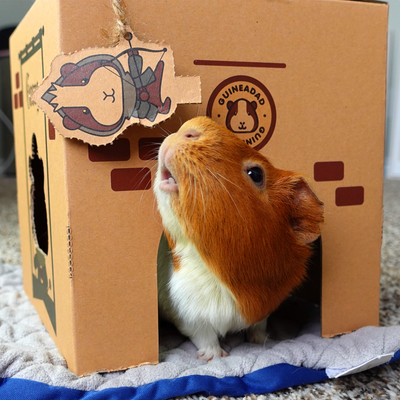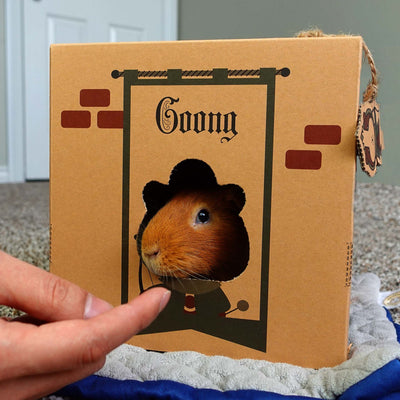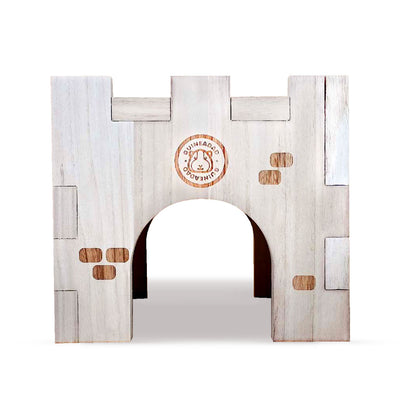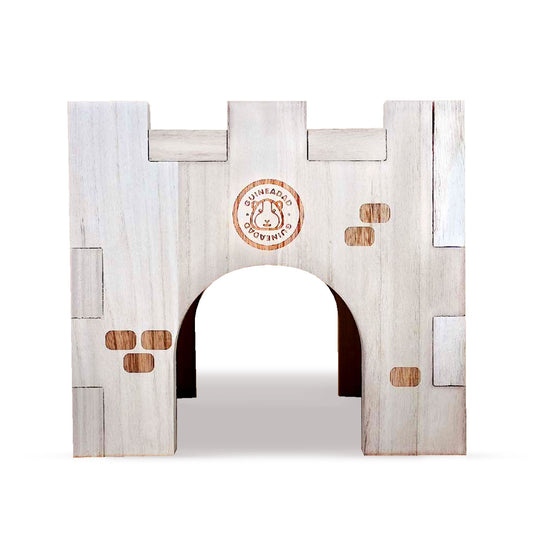Hey there GuineaGang,
Have you ever wondered about guinea pigs in the wild? Watch this short video for a quick summary about this topic:
Did you know that there's evidence to suggest inhabitants of the Andean Region of South America may have domesticated guinea pigs as long as 7,000 years ago?
Guinea pigs have a long and fascinating history from living in the wild to being domesticated and kept as pets. Some guinea pigs are wild animals, as not all breeds were domesticated or are even recognized. Wild guinea pig species
We have blog posts on the recognized breeds of guinea pigs, all compiled into a master list here, if you’re interested in learning more about them!
Where do guinea pigs come from?
Guinea pigs originated from different parts of South America, and when Spanish explorers arrived there, they brought them back to Europe where they were kept as pets.

Other genus members of Cavia are still found in the wilderness across the South American continent. Most of the genus look very similar to each other. They usually have stout bodies with a short tail, larger heads and short ears, with constantly growing teeth. Capybaras are sometimes even referred to as giant guinea pigs!
Where does the guinea pig name come from?
Guinea pigs are neither from Guinea nor are they pigs! So where does the name come from? No one knows the true origins of the name, but there are some theories!
According to the San Diego Zoo, it’s believed that the “pig” part of their name may come from the squealing, wheeking sound that they make. The “guinea” part of their name may originate from the ships transporting the rodents and leaving the port of Guiana in South America or the ports in Guinea, West Africa. However, guinea pigs aren’t native to Guinea.
There are many other rodents from around the globe that are related to guinea pigs, including other cavies, capybaras, and maras.

Where do wild guinea pigs live in the wild?
These furry friends can be found across the South American continent, living in open areas ranging from the likes of savannas or scrub deserts. They tend to stick around low elevations, but some even live in high elevations up to 16,000 feet.
They can be found from Venezuela to southern Patagonia, but can’t be found in places like western Chile or the Amazon River basin.
Wild guinea pigs enjoy digging and burrowing just as much as your domesticated pet guinea pigs—in fact they enjoy burrowing even more. If they don’t dig their own homes, they’ll move into the abandoned underground homes of other animals.
If you’ve ever found your guinea pig hiding deep in their hay piles, this is pretty similar to how wild guinea pigs will happily live in dense wild vegetation.
So where do guinea pigs live in the wild? They live throughout most of South America, in burrows they make themselves or empty burrows, dens, or holes they can find.
Just like your pet guinea pigs, these piggies are mainly diurnal, which means they’re active during the day and asleep at night, though in order to reserve energy and stay alert to their surroundings, wild guinea pigs tend to take naps in shifts, guaranteeing that someone will be awake at any given time. This reduces risk to the herd as a whole, by always having someone alert and looking out for danger. To learn more about guinea pig sleeping habits, you can check out our post here.
One reason that guinea pigs are primarily diurnal is that they require a relatively narrow temperature range to be comfortable. Being asleep during the cold nights allows them to stay warm, cuddled up together in their burrows. Frequent naps allow them to reserve their energy, as guinea pigs are herbivores and need to eat pretty regularly while they're awake. Another major factor in guinea pigs' sleep patterns is the risk of predation. As prey animals with relatively few natural defenses, guinea pigs are always at risk from the predators in their areas. The top predators in the Andes Mountain Region in South America, where most wild guinea pigs are found, are pumas and Andean Bears. Pumas are naturally nocturnal, and many bear species are known to adapt to nocturnal habits to avoid people in areas with higher human populations. These predation risks are also why it's helpful and necessary for guinea pigs to live in large groups or herds. This makes it possible for the guinea pigs to keep each other safe and if needed, they can sleep and be active in shifts, so someone is always ready to sound an alarm if there's danger.
How long do guinea pigs live in the wild?
We know that most domesticated breeds of guinea pigs have an average lifespan between 5-7 years. With good genetics, a healthy diet, and exercise, it's even possible for some domesticated guinea pigs to live into their double-digits. For wild guinea pigs, however. It's a different story. Due to harsh weather conditions and being at constant risk of predation, the average lifespan of a wild guinea pig is estimated to be between 1-4 years.
As wild guinea pigs are very reliant on their herds for their survival, evolution has made them incredibly social animals, and even domesticated pet guinea pigs should live in groups, and at the very least, in pairs. They are able to keep each other stimulated, active, and healthy, which is essential for them to live long and happy lives.
What do guinea pigs eat in the wild?
All guinea pigs, whether wild or domesticated, are herbivores. Wild guinea pigs enjoy eating any kinds of vegetation that they can find wherever they live. These wild vegetables and other vegetation include greens, wild root vegetables, and hay. This is why they live in these open, grassy areas that provide them plenty of food that they can munch on at all times of the day and night.
Other wild rodents in their family, such as capybaras and maras have the same diet as their smaller wild guinea pig family members, just in larger amounts because they’re bigger in size.
Wild guinea pig family life
Wild guinea pigs have similar mating behaviors to the domesticated guinea pig, and their gestation periods range from two to three months. The average litter is around three or four pups, but 13 isn’t uncommon to see either!
Wild guinea pigs are able to eat solid food as soon as they are born, but usually nurse first. This is different from domesticated baby guinea pigs that may only nurse at first. To learn more about how to take care of baby guinea pigs, read this post.
Are wild guinea pigs in danger of extinction?
According to the San Diego Zoo, four species of guinea pigs—Brazilian, montane, shiny, and greater—are of low concern. However, the Santa Caterina’s guinea pig is critically endangered. This is because there’s such a low population of them where they live on a roughly 27 acre island in the Serra do Tabuleiro State Park area in Santa Caterina, Brazil.
Not all guinea pigs are pets!
There are, in fact, still many breeds and related animal family members that are still living in the wild to this day. Guinea pigs and their family members are so diverse and interesting, and it’s amazing how similar their wild and domesticated lives are!
For more great guinea pig content, check out our other blog posts at:


































































5 comments
there’s actually several species of wild guinea pig.
there’s a wild one that just looks like a brown domestic one. Not sure why you’d choose an entirely different species to say it’s the original descendent of the pet variety.
I find it interesting that you failed to mention that Peruvians domesticated the guinea pig 5000 years ago and have been breeding them for food production continually up to today. They have been kept as food long before being kept as pets which is why they are so docile and such quick breeders.
I love them
Guinea pigs are adorable! I have two of them (Snowcone and Rhino) at home, and they are the best things that have ever happened to me. I buy all of your products and my piggies love them. Keep it up GuineaDad, my guinea pigs say wheek wheek!
I love guinea pigs. They are fun!